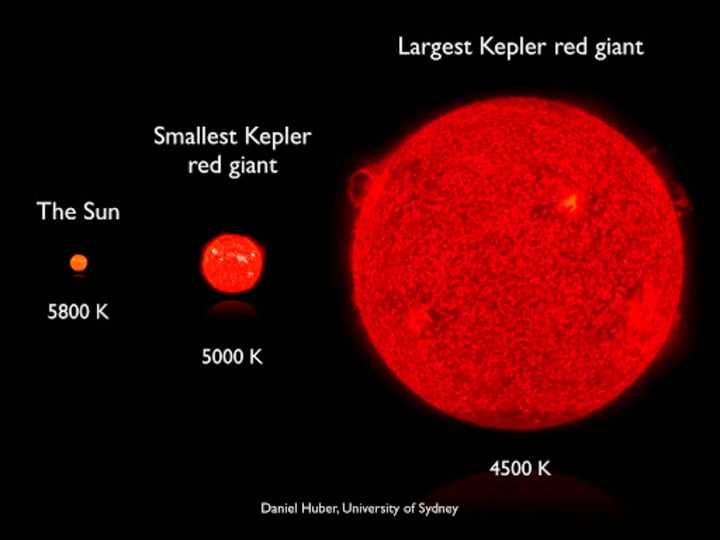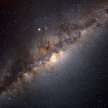
In my previous story, I wrote about a low mass star called a Red Dwarf Star. In their, I mentioned a few crucial things that are needed to understand this article. Here they are briefly:
1: Stars are made from gasses. Mainly hydrogen, helium and a bit of lithium and beryllium.
2: Stars have nuclear fusion at their core. This means they fuse hydrogen into helium and so on.
3: Finally, to counter gravity, stars need a repelling force to stop gravity from crushing the star. This force is the energy outputted by nuclear fusion.

With this knowledge, let's move on! Firstly, what is a white dwarf star? In the previous video, we discussed how a star's size actually impacts it's fate. A red dwarf is a small star.
Let's move on to a bigger star! Not all stars have the same life. In fact, they differ quite a lot. Let's take our Sun as an example! Let's talk about our Sun's fate. Our Sun is currently in the main sequence phase of it's life where it is fusing hydrogen into helium. Nuclear fusion in the Sun occurs in it's core.

The helium is trapped in it's core but the sun is not hot enough to fuse it so it is just piling up. This is because it's core is different from a red dwarf so the gas doesn't go through convection. Convection is when a gas is heated, it rises. When a gas is squashed together, it will begin to increase in temperature. This heat works its way out of the core to heat the other layers of the Sun.
Now that all the hydrogen atoms have been converted into helium atoms, there is no radiation keeping the force from gravity from collapsing the core. With 50% of the Sun's mass bearing on the core, the core will begin to reduce. With the core contracts, the Sun will heat up.
The core will heat up at such high temperatures that the shell outside will also begin hydrogen fusion. This heat surrounding the core will add it's heat and raise the temperature of the outer layers.
When gas's temperature is heated, it expands. Therefore, our Sun will expand into what is known as a Sub Giant. With the Sun now way bigger than before, the Sun generates more energy. Although this is the case, the energy per square metre will actually lower because of the sheer size of the Sun.

Because of this, the surface temperature of the Sun will decrease. When atoms are raised in temperature they start to vibrate. When electrons vibrate, they give off electromagnetic waves. Red light is the lowest frequency visible. Since the Sun is giving off low energy relative to its size, it is red.
The core will continue to contract whilst the sun will grow in size, possibly reaching 261 times its current radius! With immense energy being extinguished outward, it will overcome the force of gravity, therefore, expelling the 1/3 of it's mass outwards. This is a Red Giant!

The core continues to contract and will become hot enough for helium fusion, which is approximately 500, 000,000 K (Kelvin)! Now due to this new element fusing, there is an incredible amount of energy expelled! Due to complicated physics (that I don't know!), the core expands and absorbs a majority of this energy. This leads to only a portion of the initial energy being outputted, resulting in the large sun now reducing in size.
Now since the layers are small, they become denser than before, increasing their temperature. This leads to a variant in color, now turning orange. Similar to before, the helium begins fusing whilst the carbon builds up in the core.
Repeating the above process, contraction of the core will occur, the shell outside the core will begin helium fusion and once again, you will have a Red Giant. This time however, there is an expulsion of 1/2 it's mass.
When helium fuses, it is unstable. This means that the sun will sometimes fuse a lot of helium and sometimes, not as much. As it creates energy, it will also lose mass. Finally, when the sun fuses all helium into carbon, it will be a small star called a white dwarf.
There isn't enough heat to fuse carbon anymore so this is where it's cycle ends, leaving a white dwarf! But where did all these mass go?
In the image of this vocal story, you may have noticed a beautiful ring around the white dwarf. This, is the mass, formed around the white dwarf called a planetary nebula.
I would love to thanks the YouTube channel CrashCourse. They gave me a lot of information on this subject.

Sources:
Video I used:
https://www.youtube.com/watch?v=jfvMtCHv1q4&t=458s
https://imagine.gsfc.nasa.gov/science/objects/stars1.html#:~:text=Stars%20on%20the%20main%20sequence,phase%20of%20the%20star's%20life.&text=While%20the%20core%20collapses%2C%20the,the%20star%20to%20expand%20outward.
https://sites.uni.edu/morgans/astro/course/Notes/section2/fusion.html
http://scienceline.ucsb.edu/getkey.php?key=4017#:~:text=Answer%205%3A,energy%20corresponds%20to%20higher%20temperatures.
http://abyss.uoregon.edu/~js/ast122/lectures/lec16.html#:~:text=Carbon%20is%20the%20waste%20product,core%20would%20expand%20and%20cool.
I think this one was a source:
https://futurism.com/heres-what-it-will-look-like-when-the-sun-becomes-a-red-giant-earth-burns-video






Comments
There are no comments for this story
Be the first to respond and start the conversation.